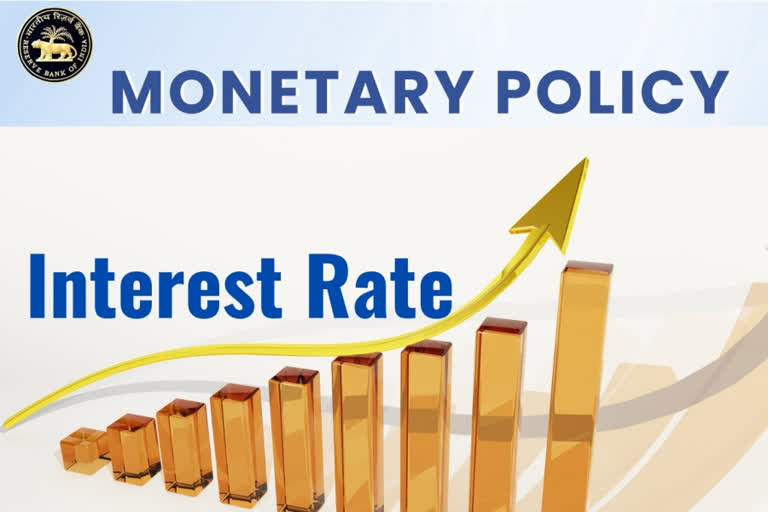New Delhi: While announcing the 35 basis point in the bench-mark lending rate, the repo rate, earlier this week, the RBI has given enough indication that the interest rates would remain at an elevated level for quite some time as its battle against the inflation is not over yet.
On Wednesday, the Reserve Bank effected a 35 basis point hike in the repo rate, the rate at which it lends money to the banks. This is the fifth time in the last 8 months when it has hiked the repo rate in its bid to tighten money supply in the market to contain the inflation which was higher than the mandate given to the Reserve Bank by the government under section 45ZA of the RBI Act.
As a result, the repo rate has gone up from 4 per cent in May this year to 6.25 per cent in first week of December, a hike of 225 basis points or 2.25%. As a result, the interest rates for corporate borrowers and retail borrowers, who borrow money from banks and non-banking finance companies, to finance their business operations or borrow money to buy homes, automobiles and for other such personal needs, have also gone up during this period.
Also read - RBI monetary policy statement is out; what you need to know
While the RBI hiked the repo rate by 40 basis points in May this year, from 4 per cent to 4.4 per cent, the Reserve Bank also effected three hikes of 50 basis points, each in June, August and September this year, taking the interest rate to 5.9%. However, given its little impact on the retail inflation which still remains above the target band set by the government under the law, the Reserve Bank effected a 35 basis point hike on Wednesday, taking the repo rate to above 6% as it brought down the quantum of increases.
How does RBI rate hike affect the common man?
Any decision by the Reserve Bank, be it an increase or a decrease in bench-mark policy rates such as repo rate and reverse repo rate, the rate at which banks borrow money from the RBI or park their surplus funds with the Reserve Bank, directly impacts the interest rates for borrowers and depositors both.
When the Reserve Bank increases the repo and reverse repo rates, not only the interest rates for depositors go up but the cost of borrowing for the loan seekers also goes up. In 2010, banks started lending on the basis of Benchmark Prime Lending Rate (BPLR), which meant the banks were not allowed to lend money below the BPLR rate. However, this model was criticized for poor transmission of monetary policy signals.
Also read - RBI hikes benchmark lending rate by 35 basis points to 6.25 per cent
In order to ensure faster transmission of monetary policy changes, a system of Marginal Cost of Funding Based Lending Rate (MCLR) was introduced in 2016. However, it still has a slow rate of transmission. In order to ensure even faster transmission of changes in the policy rates, a new lending rate, the External Benchmark Lending Rate (EBLR) was introduced in 2019.
For example, more and more banks are now following the EBLR based interest rates for lending money for home loans, automobile loans and personal loans. Private Sector banks and non-banking finance companies, that account for bulk of home loans, car loans, two wheeler loans and personal finances such as credit card spending, among other things, have been adopting the EBLR based lending model which has a faster transmission of monetary policy changes. As a result, any increase in the repo rate, as effected by the Reserve Bank this Wednesday, leads to an increase in the home loan, automobile loans and personal loans by these market participants.
What is the future outlook?
Within days of the Reserve Bank’s monetary policy announcement, banks and other non-banking finance companies announce changes in their lending and deposit rates. In addition to the hike of 35 basis points announced on Wednesday, the Reserve Bank has signaled that it would continue to follow the withdrawal of accommodative instance to control the retail inflation as it is projected to be above the upper band of 6% set by the government under the law.
Also read: Worst of inflation is behind us: RBI Governor
According to the Reserve Bank’s projections, the retail inflation, measured as the Consumer Price Index (CPI), for the third and fourth quarter of the current financial year is projected to be at 6.6% and 5.9% respectively, which is expected to come down to 5 per cent during April-June 2023 but is expected to again rise to 5.4% during the summers of the next year, any relief on interest rates is highly unlikely for borrowers.
Sunil Sinha, Principal Economist at India Ratings and Research says, it indicates that the fight against inflation is still not over as inflation is likely to remain above the 4.0 % target even during the first 2 quarters of the next fiscal. “India Ratings believes further rate hikes are still a possibility though the size of the rate hike will be smaller (25 basis points) and interval (the time gap between the policy rate hikes) could be higher,” Sinha told ETV Bharat.
Raj Mehta, Fund Manager at PPFAS Mutual Fund, says given the commentary from the RBI regarding the inflation remaining high for the next year or so, he does expect interest rates to start reducing immediately. “We may go through a period of a stagnant interest rate scenario in the near future,” Mehta said in a statement sent to ETV Bharat.



